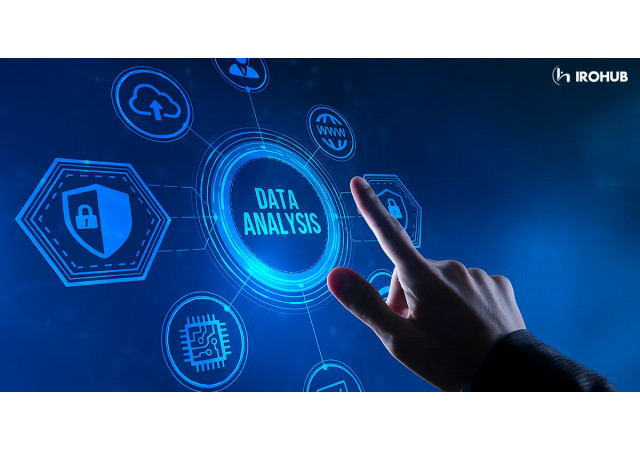In the digital age, we generate a substantial amount of data every day. Whenever someone clicks, swipes, buys, or interacts on the web, organizations can collect data from that activity to guide business actions. The problem is turning the huge amount of raw data into useful information for business. With this guide, you'll see the complete process from gathering data to making important decisions, so data analytics is easier for those starting out.
Understanding the Data Revolution
To get from raw data to insights that can be used, you need a methodical technique that blends technical know-how with business knowledge. For professionals looking to master these capabilities, enrolling in a comprehensive Data Analytics course in Kochi can provide the structured learning environment needed to develop both theoretical knowledge and practical skills.
Because there is so much easily accessible data today, data analytics has emerged to guide organizations in their decision-making. If you want to learn data analysis, acknowledging this change to using data as a basis for decision-making means you’re on the right track.
What is Data Analytics?
Data analytics relies on strategies to use data to discover important insights. Basically, it is pulling data, making sense of it for business use and applying the results to your company’s strategies.
It covers gathering and organizing information so you can learn valuable lessons and make business procedures more effective. Organizations make better, smarter and more profitable choices by applying data analytics.
The Four Types of Data Analytics
1. Descriptive Analytics
Descriptive analytics looks at both recent and historical data to find trends and connections. It represents the most fundamental analysis type, summarizing past events using statistical analysis to explore datasets and establish foundations for advanced techniques.
2. Diagnostic Analytics
Diagnostic analytics determines why certain events occurred by analyzing data comprehensively. It uses techniques like data discovery, drill-down analysis, correlations, and regression analysis to identify underlying causes of behaviors and events.
3. Predictive Analytics
Predictive analytics helps predict what will happen in the future with the help of data from the past and artificial intelligence. They apply these tools to find out the latest trends and search for chances or challenges in the industry.
4. Prescriptive Analytics
Prescriptive analytics helps organizations make decisions that will improve operations and meet their targeted goals. Here, the inferences are geared toward steps you can use, by using both types of models and statistical and machine learning tools.
The Complete Data Analytics Process
Step 1: Data Collection
Data collection forms the analytical foundation and must align with business objectives. Organizations gather data through big data technologies, database queries, web scraping, and API integrations.
Data Sources Include:
- First-party data: First-party data is gained directly from clients.
- Second Party Data: Additional customer insights from partners
- Third Party Data: Information from external entities
Step 2: Data Processing and Cleaning
Raw data often contains inconsistencies and missing values. Data cleansing eliminates errors including missing numbers, outliers, and anomalies to guarantee high-quality results. This process removes duplicates and irregularities that could bias analysis results.
Step 3: Data Analysis
Analysis utilizes various techniques to understand data and draw inferences. This requires skills to create statistical models examining relationships within datasets. Some well-known methods are association rule mining, anomaly spotting, clustering analysis, and prediction modelling.
Step 4: Data Interpretation
The final step examines analyzed data using established criteria to draw conclusions. Through interactive dashboards and real-time reports, analysts help stakeholders understand numerical data relevance and implications.
Essential Tools for Data Analytics
Programming Languages
Python is currently the language that programmers use most for data analysis. Its open-source nature, readability, and extensive library ecosystem make it ideal for beginners. Many python courses are available to help newcomers master this essential skill for data manipulation and analysis.
Business Intelligence Platforms
Power BI has evolved into a comprehensive business analysis tool with minimal learning curves. It enables interactive dashboard development and visual report creation while offering seamless data connectivity across various sources including cloud platforms and SQL servers.
Spreadsheet Software
Microsoft Excel remains fundamental for data analysis, providing built-in features like pivot tables for data calculation and sorting, along with visualization capabilities that streamline analytical processes.
Statistics: The Analytical Foundation
Understanding basic statistical concepts is crucial for data analytics beginners. Statistics provides tools for collecting, analyzing, interpreting, and presenting data effectively.
Key Statistical Concepts
- Central Tendency: The mean, median, and mode are the main ways to summarise how data is distributed.
- Dispersion: Range, variance, and standard deviation characterise data spread.
- Correlation: finds correlations between variables for the purpose of predictive modeling.
Critical Importance in Modern Business
Product Development
Using data analytics, companies can look ahead and evaluate their status in the market and what trends will arise. Companies assess market conditions, optimize operations, and determine new product launch strategies based on analytical insights.
Financial Decision-Making
The financial sector pioneered data analytics adoption. Finance teams collect critical performance measures, converting structured and unstructured data into usable insights to aid in smart decision-making and fraud detection.
Business Efficiency Enhancement
Analytics helps companies find ways to develop, get a better return on investment, and run their operations more efficiently. It detects potential threats early, enabling proactive action plan development while determining which operations deliver optimal results.
Best Practices for Effective Analysis
Ensuring Data Quality and Integrity
Reliable, high-quality data is the foundation of successful analytical projects. Before commencing analysis, thoroughly clean and validate the data to ensure that there are no missing values, outliers, or inconsistent values. Reliable results and insights are produced by this emphasis on data integrity.
Documentation and Reproducibility
Document data analysis workflows meticulously for transparency and reproducibility. Keep detailed records of analytical steps, tools used, and parameters selected. This practice enables easy replication of analysis and facilitates knowledge sharing with team members and stakeholders.
Collaboration and Communication
Data analysis projects often involve multiple stakeholders and team members. Establish clear communication channels and provide regular progress updates. Collaborative tools and platforms facilitate effective teamwork, allowing members to share insights, discuss findings, and work together toward common goals.
Ethical Considerations
Handle data ethically and respect individual privacy rights throughout the analytical process. This includes getting the right permission, making sure that data is anonymised when needed, and following all data security laws. Ethical data analysis maintains trust and integrity in your work.
Data Analyst Career Path: Steps to Enter the Field
For people who want to make information from data and are wondering how to become a data analyst, data analytics provides plenty of career prospects. Planning a career requires an understanding of the differences between data science vs data analytics. Data science tries to develop new methods to guide predictions, but data analytics analyzes previous data to support business solutions.
Building Basic Skills
Taking time to learn statistical analysis, Python programming and data visualization tools is useful for those building a career in data analytics. By joining special educational sessions from software training institute in Kochi, many experts develop and refine their expertise.
Getting Experience on the Job
Working with actual data and business cases makes learning easier and faster for students. Comfort and expertise in this area come from working with different data, applying analytical tools and making graphs.
Advanced Analytics: Introduction to Machine Learning
Data analytics is set to evolve through machine learning, as computers now have the ability to learn from information without being explicitly programmed. Becoming familiar with the basics of machine learning helps people move on to more advanced ways of analyzing information.
You can divide Machine Learning into many types.
- Supervised Learning: They use labeled sets of data to help make predictions or assign new knowledge to categories, for example, through linear regression and decision trees.
- Unsupervised Learning: Algorithms can identify useful patterns in data that has no labels and they prove helpful in tasks such as clustering, spotting unusual points and lowering the number of dimensions.
- Reinforcement Learning: Receiving guidance from the environment, systems can improve how they learn and decide with time.
Conclusion: Your Journey from Data to Insights
Being able to turn raw data into useful insights for a business is extremely valuable these days. If you learn the key points, processes and tools outlined here, you can begin to develop your skills as a data analyst.
Keep in mind that data analytics demands abilities in technology, business and creative thinking. For anyone, whether learning in Kochi through Data Analytics courses or independently, you need to start with the basic knowledge and apply it to solve actual problems.
The area of data analytics is constantly growing, adding fresh tools, techniques and uses all the time. Try to stay open-minded, keep growing and bear in mind that those who are experts all started at the start. You need to first understand these main ideas and then use them to address true business questions.
The key to doing well in data analytics is holding expertise in the field, being business-smart, sticking to ethical standards and communicating skillfully. When you work on these skills, you become able to extract important information from data and lead to new ideas and achievements in the career you pick.







Post Comments (0)